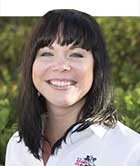
As we quickly approach harvest season, cornstalk nitrate testing may be something you want to consider adding to your regular fall routine. While testing the nitrates at the end of the season won't allow you to improve the current year's crop, it will allow you to tweak your nitrogen application for each field in the coming year. Annual nitrate testing is beneficial to every operation as it gives you a longer term view of how much N is available during the growing season. When you notice a field continually tests in excess each year, you may observe that manure or fertilizer may be better spent on another field to improve yields elsewhere.
Samples should be taken starting one week prior to harvest until four days after harvest for corn silage. Fields larger than 15 acres should be subdivided into smaller sections for accurate sampling.
The sample is taken toward the base of the stalk. Cut an 8-inch length, starting 6 inches above the ground. Make sure you pick stalks representative of the corn in that field or section of the field for a proper sampling. From each section of the field you are sampling, collect 15 stalk segments. You'll combine these into one sample. Keep samples cool and dry to minimize mold growth. Typically wrapping them in some old paper bags, taping them securely and marking them with a permanent marker will suffice. If you're not mailing them to the lab for testing that day, keep them in the refrigerator, but not frozen, until you're ready to ship. Your local extension office should be able to recommend a local lab to test your samples at a reasonable price.
For more information on stalk sampling and the interpretation of the results you'll receive from the lab, please visit this extension fact sheet for more details.

The author is the special publications editor, responsible for books, plans, distribution of the e-newsletter and various internal communication pieces. She grew up on a 60-cow dairy in northwest Wisconsin, and is a graduate of University of Wisconsin–Madison with a degree in life sciences communications.








